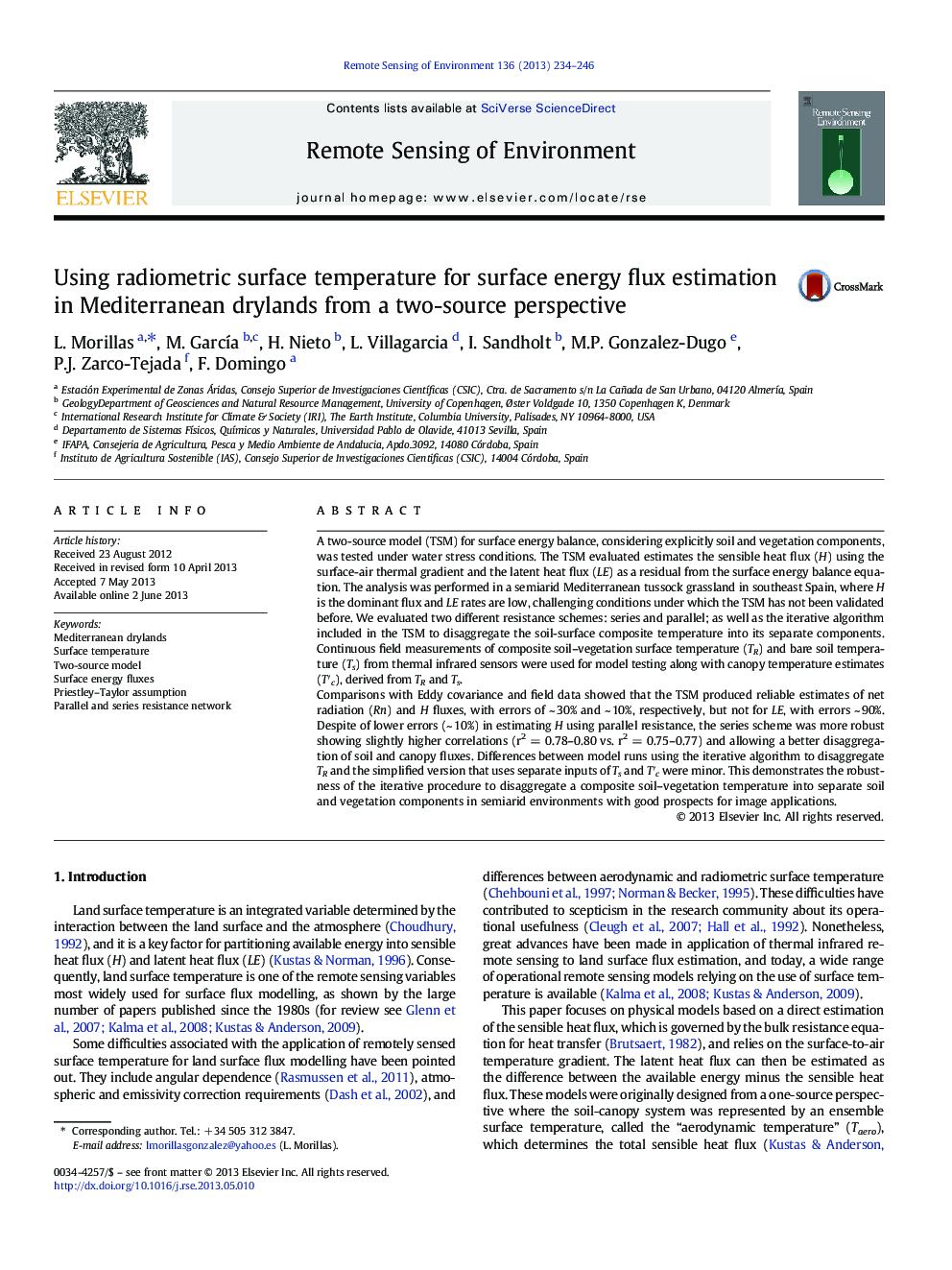| Article ID | Journal | Published Year | Pages | File Type |
|---|---|---|---|---|
| 6347411 | Remote Sensing of Environment | 2013 | 13 Pages |
Abstract
Comparisons with Eddy covariance and field data showed that the TSM produced reliable estimates of net radiation (Rn) and H fluxes, with errors of ~Â 30% and ~Â 10%, respectively, but not for LE, with errors ~Â 90%. Despite of lower errors (~Â 10%) in estimating H using parallel resistance, the series scheme was more robust showing slightly higher correlations (r2Â =Â 0.78-0.80 vs. r2Â =Â 0.75-0.77) and allowing a better disaggregation of soil and canopy fluxes. Differences between model runs using the iterative algorithm to disaggregate TR and the simplified version that uses separate inputs of Ts and Tâ²c were minor. This demonstrates the robustness of the iterative procedure to disaggregate a composite soil-vegetation temperature into separate soil and vegetation components in semiarid environments with good prospects for image applications.
Related Topics
Physical Sciences and Engineering
Earth and Planetary Sciences
Computers in Earth Sciences
Authors
L. Morillas, M. GarcÃa, H. Nieto, L. Villagarcia, I. Sandholt, M.P. Gonzalez-Dugo, P.J. Zarco-Tejada, F. Domingo,
